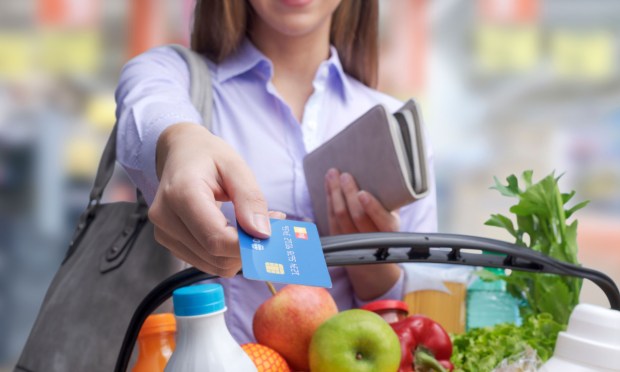Paying Over Time for Groceries Will Continue Amid Disposable Income Pressures

Recent economic data from this week give ammunition to the argument that paying for groceries over time will be a long-standing trend.
As noted in this space, PCE data released Thursday (Feb. 29) noted that inflation is slowing, at least overall. But food is pricier than it was, at least as measured from December into January, by 0.5% — and it’s one of the categories that has had the most notable increases. That’s especially true given the fact that January, prices for goods, overall, slid by 0.2% month over month.
At the same time, there are some details into the state of household finance that give the nod to the fact that even if inflation is slowing, there’s a duality of pressure in place.
Savings rates are lower than they have been in the recent past. Personal saving — which is, simply put, a replenishment of what’s been drawn down from accounts — was 3.8% of disposable income, lower than the 4.8% rate seen last summer.
And disposable income is not, to put it mildly, what it once was. Though disposable income was up 0.3% from December, inflation’s kept pace with that rate, at 0.3%.
If disposable income is blunted by inflation, and it’s taking time to build up savings, it makes sense, then, that consumers would shift toward different, and strategic, ways of paying for everyday essentials.
Keeping the Cupboard Stocked
That includes groceries, which are among the most essential of staples. As noted above, stocking the larder has been almost consistently more expensive, measured month to month. And as noted by Karen Webster in a recent column, consumers have been finding value in spreading out their grocery payments over time. Roughly a third of U.S. consumers have used traditional credit cards, which of course means that, in the event that they revolve their balances, the paydown is staggered.
Separately, a smaller percentage of consumers, overall, at about 5%, have turned to buy now, pay later (BNPL) options. Affirm noted in its recent earnings report that categories that would include groceries — such as general merchandise — have seen double-digit percentage point increases. Elsewhere, the company has expanded its pay over time options at Walmart self-checkout kiosks. Walmart has a 19% share of the grocery category, according to our estimates.
Eighty percent of consumers who used any type of installment to make grocery purchases report doing so as a convenient way to manage their monthly spend and pay bills. To help make grocery purchases more affordable, as PYMNTS data has shown, a significant percentage of consumers have been cutting back on other purchases, which dovetails with the January data from the government that spending was down for the month in the aggregate.

